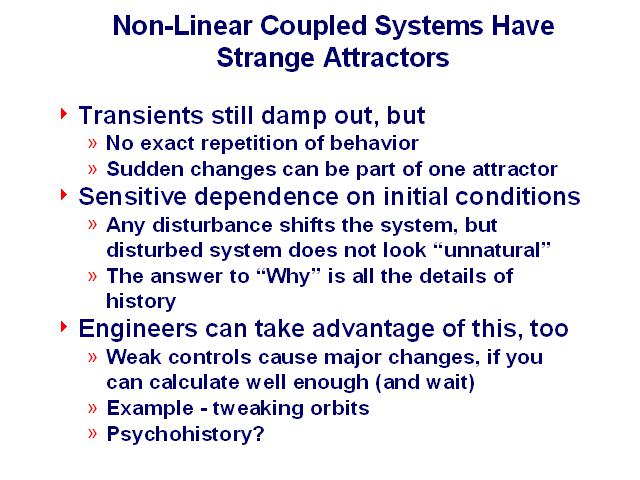
NOTES
What's going on is called a strange attractor. Transients are still damping out, but the final dynamics of the system are still complex, and the system is very sensitive to changes in initial conditions - any disturbance will shift the system permanently to a new portion of the attractor, which will diverge from the original portion, perhaps dramatically. It's important to note that when a disturbance leads to the system changing paths, the new path will look as like as plausible a future path as the undisturbed path would have. The answer to why, for example, the pendulums loops over the top twice in a row 10 minutes after the system is started, depends on the precise details of the system's history, not on the basic characteristics of the systems (as before). Although this kind of system is not what engineers are accustomed to, some have learned to use this kind of behavior, for achieving orbital changes with little energy cost, for example. Psychohistory could be another application - but not yet, as far as we know...
